Best Wet Scrubber Manufacturer & Suppliers in India
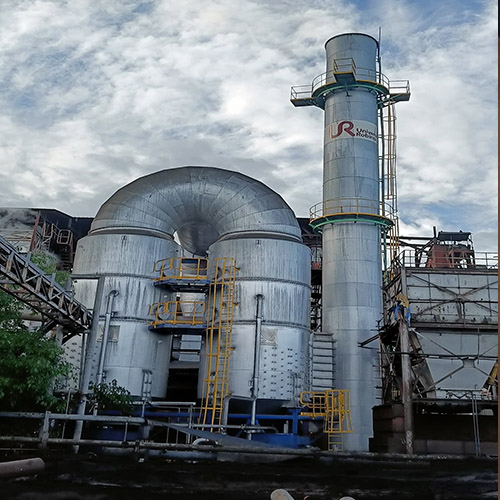
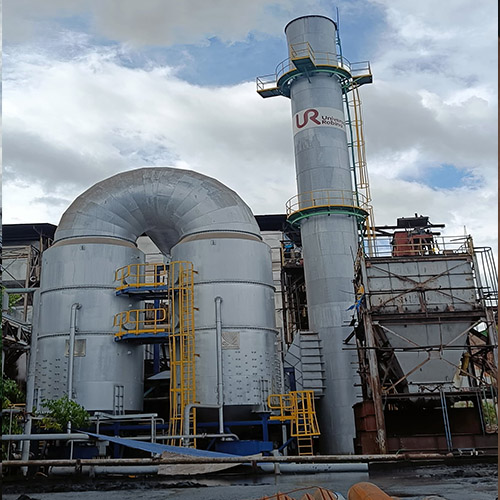
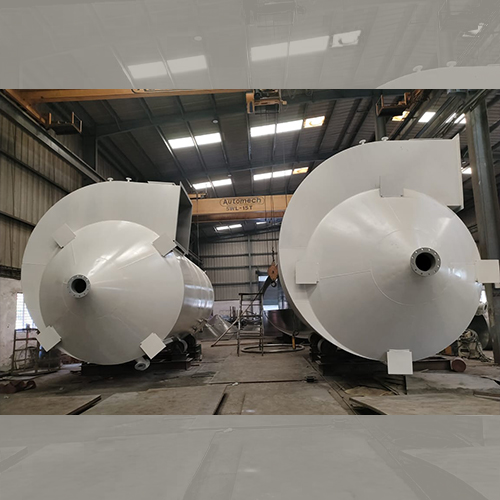
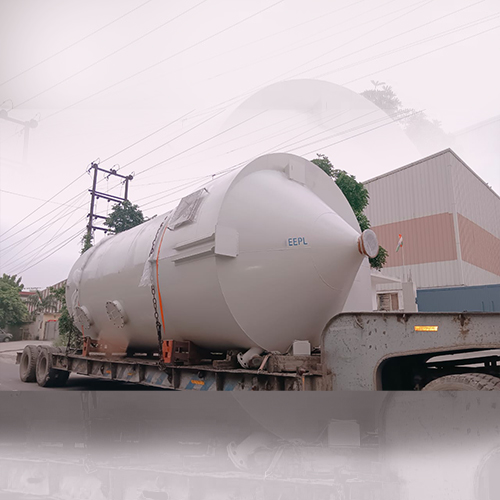

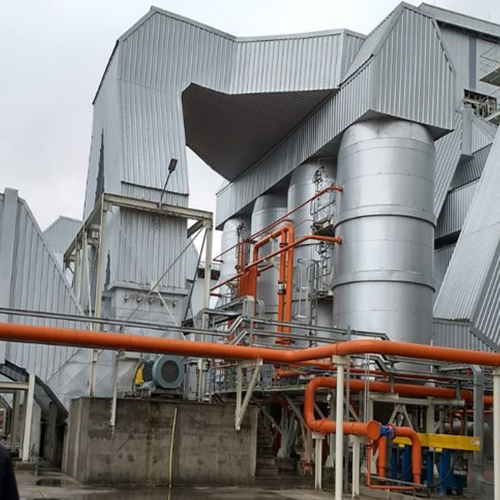
A wet scrubber, also known as a wet scrubber system or simply a scrubber, is an air pollution control device used to remove pollutants, such as particulates, gases, and chemical compounds, from industrial exhaust gases or emissions. It does this through a process known as "scrubbing," which involves the interaction of the contaminated gas stream with a liquid (usually water or a chemical solution) to capture and remove the pollutants. Wet scrubbers are commonly used in various industries to improve air quality and reduce emissions.
.png)
Here's a basic description of how a wet scrubber works:
- Gas Inlet:The polluted gas stream containing contaminants, such as dust, fumes, or gases, enters the wet scrubber through an inlet.
- Contact with Liquid:Inside the scrubber, the gas stream comes into contact with a liquid, typically water, which can also contain chemical additives to enhance pollutant removal. This liquid is continuously circulated and sprayed into the gas stream using nozzles, creating a scrubbing medium.
- Scrubbing Process:The interaction between the polluted gas and the liquid results in several processes for pollutant removal
- Absorption:Gaseous pollutants are dissolved or absorbed into the liquid phase. This is particularly effective for acidic gases like sulfur dioxide (SO2) and ammonia (NH3).
- Adsorption: Some particles and volatile organic compounds (VOCs) may adhere to the liquid droplets, effectively removing them from the gas stream.
- Particulate Capture:Solid particles are captured by the liquid droplets through impaction and absorption, forming a slurry.
- Chemical Reactions:Chemical additives in the liquid can react with certain pollutants to convert them into less harmful compounds.
- Separation:The gas stream, now significantly cleaned of contaminants, passes through separation devices within the scrubber to separate the cleaned gas from the liquid and solid particulates. Common separation methods include cyclone separators, mist eliminators, or demisters.
- Liquid Handling:The liquid, which now contains captured pollutants and particulates, is often treated further for proper disposal or recycling. This may involve sedimentation, settling tanks, or treatment processes to neutralize or remove hazardous substances.
- Clean Gas Outlet:The cleaned gas, having undergone the scrubbing process, exits the wet scrubber through an outlet, with a significantly reduced concentration of pollutants.
Wet scrubbers are versatile and can be designed to handle various types of pollutants, making them suitable for a wide range of industries, including chemical manufacturing, power generation, metal processing, and more. They are effective in reducing emissions of particulate matter, acidic gases, toxic chemicals, and odorous compounds, contributing to better air quality and compliance with environmental regulations.
Features and benefits of Wet scrubber
Wet scrubbers are air pollution control devices with several features and benefits that make them effective for removing pollutants from industrial exhaust gases. Here are some of the key features and benefits of wet scrubbers:
Features of Wet Scrubbers:
- Versatility: Wet scrubbers can effectively remove a wide range of pollutants, including particulate matter, acidic gases, alkaline gases, organic compounds, and odorous substances, making them suitable for diverse industrial applications.
- Customization: They can be customized to address specific emission control requirements, with variations in design and materials to handle different types of contaminants.
- High Efficiency: Wet scrubbers have a high removal efficiency, often exceeding 90%, for many types of pollutants. They are particularly effective for acidic gases and fine particulates
- Gas-Liquid Contact:The gas-liquid interaction in wet scrubbers promotes the absorption of gases and the capture of particulates, ensuring thorough pollutant removal.
- Compact Design: Wet scrubbers can be designed in a compact form, making them suitable for installations in limited space environments.
- Continuous Operation: They can operate continuously and are not sensitive to variations in gas flow rates, which allows for consistent performance.
- Easy Maintenance: Wet scrubbers typically require less maintenance than some other pollution control systems, and they have a longer service life when well-maintained.
Benefits of Wet Scrubbers:
- Effective Pollutant Removal: Wet scrubbers are highly effective in reducing emissions of various pollutants, improving air quality, and ensuring compliance with environmental regulations.
- Reduced Environmental Impact: They help minimize the release of harmful pollutants into the atmosphere, contributing to a cleaner and healthier environment.
- Health and Safety: By controlling air pollutants, wet scrubbers protect the health and safety of workers and nearby communities by reducing exposure to hazardous substances.
- Odor Control: Wet scrubbers can effectively remove odor-causing compounds, making them valuable in industries where odor control is essential.
- Particulate Control: They are particularly efficient at capturing fine particulate matter, which is a major concern for health and environmental quality.
- Acid Gas Control: Wet scrubbers are capable of removing acidic gases like sulfur dioxide (SO2) and hydrogen chloride (HCl), helping to mitigate acid rain and corrosive emissions
- Compliance with Regulations: Industries using wet scrubbers can ensure compliance with air quality and emission regulations, avoiding legal and financial penalties.
- Resource Recovery: In some cases, valuable resources can be recovered from the scrubbing process, such as the production of sulfuric acid from sulfur dioxide emissions.
- Reduced Fire Hazard: Wet scrubbers can reduce the risk of fires and explosions by controlling volatile organic compounds (VOCs) in certain applications.
Overall, wet scrubbers offer an effective and versatile solution for controlling air pollution, promoting environmental stewardship, and safeguarding the health and safety of both workers and the surrounding community.
Industrial application of wet scrubber
Wet scrubbers find a wide range of industrial applications across various sectors where the control of air pollutants, including particulates and gases, is essential for compliance with environmental regulations and for maintaining a safe and clean working environment. Here are some common industrial applications of wet scrubbers:
- Power Plants:
- Flue Gas Desulfurization (FGD) Systems: Wet scrubbers are used to remove sulfur dioxide (SO2) and other acidic gases from the flue gases of coal-fired power plants, reducing acid rain and air pollution.
- Chemical Manufacturing:
- Chemical Process Emissions: Wet scrubbers are employed to control emissions of corrosive gases, volatile organic compounds (VOCs), and hazardous chemicals from various chemical manufacturing processes
- Metal Processing:
- Metal Smelting and Refining: Wet scrubbers help capture and neutralize harmful fumes and particulates generated in metal smelting and refining operations, such as aluminum and steel production.
- Pulp and Paper Industry:
- Recovery Boiler Emissions:Wet scrubbers are used to control emissions from recovery boilers, reducing particulates, sulfur compounds, and other pollutants.
- Waste Incineration:
- Municipal Waste Incinerators: Wet scrubbers are used to control emissions of particulates, heavy metals, and acidic gases generated during the incineration of municipal solid waste.
- Pharmaceutical Manufacturing:
- VOC Emissions Control: Wet scrubbers are employed to capture and control emissions of volatile organic compounds (VOCs) generated in pharmaceutical manufacturing processes.
- Mining and Ore Processing:
- Mineral Processing Emissions: Wet scrubbers help control emissions of dust, metals, and sulfur compounds produced during mining and ore processing operations.
- Food Processing:
- Odor ControlWet scrubbers are used to control odorous emissions from food processing facilities, such as rendering plants and meat processing facilities.
- Oil and Gas Industry:
- Natural Gas Processing: Wet scrubbers remove contaminants, including sulfur compounds and hydrocarbons, from natural gas streams.
- Refinery Emissions Control: Wet scrubbers are used to control emissions of sulfur dioxide (SO2), nitrogen oxides (NOx), and particulates in petroleum refineries.
- Textile Industry:
- Dyeing and Finishing Operations: Wet scrubbers help control emissions of VOCs and chemical fumes from textile dyeing and finishing processes.
- Paint and Coatings Manufacturing:
- VOC Emissions Control: Wet scrubbers are employed to capture and control emissions of volatile organic compounds (VOCs) generated in paint and coatings manufacturing.
- Woodworking and Furniture Manufacturing:
- Wood Dust Control: Wet scrubbers help control emissions of wood dust and volatile compounds from woodworking and furniture manufacturing operations.
- Electronic and Semiconductor Manufacturing:
- Semiconductor Manufacturing:Wet scrubbers are used to control emissions of hazardous gases generated in semiconductor manufacturing cleanrooms.
- Municipal Water and Wastewater Treatment:
- Odor Control: Wet scrubbers are employed to control odorous emissions in sewage treatment plants and wastewater facilities.
The choice of wet scrubber type and design depends on the specific pollutants to be controlled and the requirements of the industrial process. Wet scrubbers play a critical role in reducing emissions, protecting the environment, and ensuring compliance with air quality regulations in these various industrial applications.
Wet Electrostatic Precipitator
In today’s world, sustainability is crucial. Enviropol stands out the best in providing air pollution control solutions. Our advanced technology devices like wet ESP, and electrostatic tar precipitator caters to the diverse needs of industries. Our commitment to excellence has helped us gain the title of leading wet electrostatic precipitator manufacturer.
Our Core Solutions
• Wet Electrostatic Precipitators: Installing good quality air pollution control devices in industries that release harmful particles or gasses. Wet electrostatic precipitator is an effective air pollution control device. It is used to remove fine particles from industrial exhaust gasses. The wet ESP is used in capturing small and sticky and wet particles which otherwise can escape in the environment and cause air pollution. This device is mainly used in industries like steel, chemicals, and others. The Enviropol’s wet ESP requires minimal maintenance and also consumes less energy. The wet electrostatic precipitator helps industries to adhere to the regulations and also provides a safe working environment.
• Electrostatic Tar Precipitators: Electrostatic Tar Precipitator is used to deal with tar and oil mist emissions. These gases are extremely dangerous for human health and can also affect the equipment. This air pollution control device is designed to capture and remove all these contaminants. Our Electrostatic Tar Precipitator is designed to maximize efficiency. It also helps industries to adhere to the environmental regulations and also maintain the efficiency of operations conducted. The solutions offered by our professionals at Enviropol enhance the life of equipment which leads to the low maintenance cost. It also helps industries to contribute towards a cleaner production process.
• Comprehensive Electrostatic Precipitator Solution: We offer both dry and wet electrostatic precipitator devices to fulfill the diverse needs of industry. Dry electrostatic precipitator is commonly used to deal with industries where large quantities of dry particles need to be removed. On the other hand, wet electrostatic precipitators are used in industries that deal with sticky or wet particles. As the leading Electrostatic Precipitator Manufacturer, Enviropol offers customized solutions according to the needs of the industry. Our wet ESP is highly effective and has low maintenance costs. It is the best cost-effective solution for those industries that want to enhance air quality.
• Custom-Engineered Air Pollution Control Systems: At Enviropol we understand that different industries have different requirements. We specialize in designing air pollution control systems according to your requirements. We provide you with the solution that perfectly aligns with your operations. Doesn’t matter whether you’re looking for a small-size purification or large air pollution control system, Enviropol has it all. Our professional team ensures that we design each piece that can be easily installed and has low maintenance costs. We closely deal with clients, help them understand their challenges, and develop a system that can maximize their performance.
Why Choose Enviropol
• Industry Expertise and Innovation: The primary benefit of choosing Enviropol is that we have years of experience in this field. As the leading wet electrostatic precipitator manufacturers, we incorporate all the advancements in air pollution control. It helps to improve efficiency and also increase productivity. Our professional team does continuous research on how to enhance the efficiency of productivity. We try to stay ahead of industry trends.
• High Efficiency and Low Maintenance: Industries always look for air pollution control devices that require less maintenance and give high efficiency. At Enviropol we design the electrostatic tar precipitator and wet electrostatic precipitator that offers maximum efficiency with minimum maintenance. It also improves the life of equipment. Our device can handle huge loads while maintaining its efficiency.
• Compliance with Global Environmental Standards: Industries need to adhere to strict environmental norms. As the leading electrostatic precipitator manufacturers, we ensure that with our devices, industries can fulfill the standards. Our devices are designed in such a way that they comply with environmental and other international norms. This makes us the leading wet electrostatic precipitator suppliers.
• Customization and Flexibility: Different industries have different requirements for air pollution control devices. Enviropol offers customizable air pollution control devices to their clients according to their requirements. They assess the needs of clients and recommend to them the best solution that can improve efficiency. Doesn’t matter whether you need a small-scale control device or a large scale; Enviropol has got everything covered. Our professionals provide flexible solutions according to your requirements.
• Durability and Longevity: Industries have harsh weather conditions. The devices, which are made of high quality, can only resist such weather. Our products, like wet ESP, are manufactured from high-quality raw material, which ensures that they’re long-lasting and can handle harsh weather conditions. Our products are cost-effective solutions for industries looking for air pollution control devices.
• Expert Technical Support and After Sale Service: Industries always choose the companies that have strong after-sale services and are available for them every time. At Enviropol we have a professional support team to help clients and ensure that our systems are working smoothly. From assessing the requirement to installation to after-sale service, we provide complete technical support. You can also get the upgrade and maintenance services to improve the longevity of air pollution control devices.
Industries We Serve
Enviropol deals with a wide variety of products to cater to various industries. Our strong network makes us the leading wet electrostatic precipitator suppliers. Let’s have a look at various industries we deal with:
• One of the major industries we deal in is power plants. Our devices help to reduce the emission of harmful gases and also help these industries to adhere to environmental norms.
• Cement and steel plants also release a lot of gases. Our products help them to improve the air quality and also reduce industrial pollution.
• Tar and oil mists are the particles that can harm humans as well as the environment. Our electrostatic tar precipitator helps industries to reduce the emission of such particles and reduce air pollution.
In conclusion, our air pollution control devices are the best solution for industries to adhere to the environmental norms. Our products, like wet electrostatic precipitators and electrostatic tar precipitators, are the best air pollution control devices.






